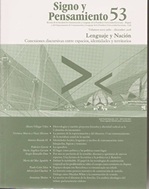Abstract
Positioning Masculinities and Femininities in Preschool EFL Education seeks to describe and interpret how masculinities and femininities are communicated in the preschool EFL classroom and is aimed at discussing whether those masculinities and femininities are likely to have an impact on the preschoolers’ learning of English as a foreign language. Preschoolers’ classroom interactions taking place in a Colombian kindergarten, videotaped from 2004 to 2006, are analysed via ideas of ‘positioning gender in discourse’ and of ‘gender as discourses of multiplicity’. Thus the analysis follows Feminist and Poststructuralist Discourse Analysis (FPDA) principles. Findings reveal three salient patterns. Firstly, the discursive construction of teacher-like figures shows that both female teachers and girl-teachers are seemingly undermined by subtle discourses in which boys resist and aim at suppressing female powerful positions. Secondly, the data indicates that there are instances in which gendered-friendship networks bring into place an egalitarian position where both masculinities and femininities cross traditional boundaries. Finally, the analysis of talk around EFL text/content unveils subject positions taken up by the preschoolers to align and contest power positions drawing on gendered discourses. Drawing on these findings and the formulation of transformative actions, the conclusion discusses the implications for educational practice and future research in the highly situated context of young children’s gendered ‘second language learning’ practices.This journal is registered under a Creative Commons Attribution 4.0 International Public License. Thus, this work may be reproduced, distributed, and publicly shared in digital format, as long as the names of the authors and Pontificia Universidad Javeriana are acknowledged. Others are allowed to quote, adapt, transform, auto-archive, republish, and create based on this material, for any purpose (even commercial ones), provided the authorship is duly acknowledged, a link to the original work is provided, and it is specified if changes have been made. Pontificia Universidad Javeriana does not hold the rights of published works and the authors are solely responsible for the contents of their works; they keep the moral, intellectual, privacy, and publicity rights.
Approving the intervention of the work (review, copy-editing, translation, layout) and the following outreach, are granted through an use license and not through an assignment of rights. This means the journal and Pontificia Universidad Javeriana cannot be held responsible for any ethical malpractice by the authors. As a consequence of the protection granted by the use license, the journal is not required to publish recantations or modify information already published, unless the errata stems from the editorial management process. Publishing contents in this journal does not generate royalties for contributors.


